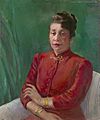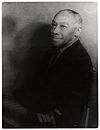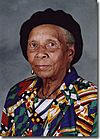Type 14 105 mm cannon facts for kids
Quick facts for kids Type 14 105 mm cannon |
|
|---|---|

Type 14 105 mm cannon
|
|
| Type | Field gun |
| Place of origin | |
| Service history | |
| In service | 1925-1945 |
| Used by | |
| Wars | World War II |
| Production history | |
| Designer | Osaka Arsenal |
| Produced | 1925-? |
| No. built | 64 |
| Specifications | |
| Mass | 3,116.7 kilograms (6,871 lb) |
| Barrel length | 3.556 metres (11 ft 8 in) L/34.2 |
|
|
|
| Shell | 15.77 kilograms (34 lb 12 oz) |
| Caliber | 105 mm (4.13 in) |
| Breech | interrupted screw |
| Recoil | hydropneumatic |
| Carriage | split trail |
| Elevation | -5° to +33° |
| Traverse | 30° |
| Rate of fire | 6-8 rounds/minute |
| Muzzle velocity | 620 m/s (2,034 ft/s) |
| Maximum firing range | 13,265 metres (14,507 yd) |
| Sights | Panoramic |
The Type 14 105 mm cannon (十四式十糎加農砲, Jyūyon-shiki Kanōhō), also known as a "10-cm" gun, was a cannon used by the Imperial Japanese Army (IJA). It was used during for long-range fire.
This artillery piece was the first medium caliber cannon which was Japanese designed. It the first with a split trail carriage. It was used Imperial Japanese Army but was not considered successful. It was replaced by the Type 92 105 mm cannon.
Contents
History
Before World War I, the Imperial Japanese Army mainly had Krupp cannons from Germany. After the Versailles Treaty, the Japanese considered other options including cannon designed by Schneider et Cie from France.
In 1925, IJA began to use the "Type 14" which was based on Schneider designs; however, the Type 14 was not considered successful.
Combat record
Type 14s were used for training units in the Japanese home islands.
Related pages
Images for kids
 | James Van Der Zee |
 | Alma Thomas |
 | Ellis Wilson |
 | Margaret Taylor-Burroughs |


